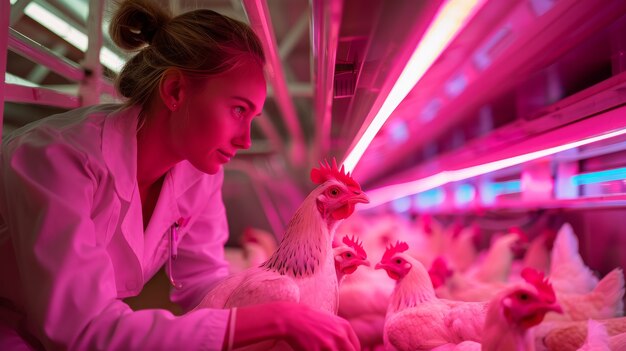
Sponsored article
As the demand for ethically produced poultry continues to rise, attention turns to innovative feeding strategies that prioritize the welfare of birds. Traditional methods are being supplemented or replaced by approaches that not only meet nutritional needs but also enhance the health, growth, and well-being of poultry. In this article, we explore how cutting-edge techniques in poultry feeding are reshaping the landscape of animal welfare, focusing on the benefits they offer to both farmers and the birds themselves.
Innovative feeding techniques are reshaping the landscape of poultry welfare by introducing nutritional strategies that focus on enhancing both the health and productivity of birds. One promising approach involves the integration of prebiotics and probiotics into diets, which promotes gut health and reduces reliance on antibiotics, thus supporting a more sustainable poultry farming model. Additionally, precision feeding technologies, such as automated feeders, allow for tailored nutrient delivery that aligns with the precise developmental stages and needs of the flock, enhancing overall well-being. The inclusion of natural feed additives like saponins not only boosts the immune response of poultry but also improves digestion and nutrient absorption. Implementing these strategies requires a thoughtful redesign of feeding systems and diligent management to ensure optimal outcomes. Industry resources like Modern Poultry provide invaluable guidance for farmers aiming to implement these cutting-edge nutritional strategies, paving the way for improved poultry welfare and sustainable production practices.
The role of sustainable feed solutions in ethical poultry farming is pivotal to advancing the welfare of both poultry and the environment. As the demand for ethically sourced poultry products rises, sustainability and eco-friendly feeds are becoming increasingly crucial. Sustainable feed solutions utilize ingredients that are responsibly sourced, minimizing the depletion of natural resources and reducing the carbon footprint associated with poultry farming. These feeds incorporate local, organic, and non-GMO ingredients, which not only promote better health and nutrition for poultry but also help in maintaining biodiversity. By investing in sustainable feed solutions, farmers can ensure their poultry is raised in a manner that respects animal welfare, reduces waste, and supports ecological balance. Ethical poultry farming hinges on the ability to provide high-quality, natural feeds that align with the principles of sustainability, contributing to a harmonious relationship between agriculture and the environment. This strategic alignment creates a win-win scenario for livestock welfare and ecological preservation.
The impact of technology on poultry feeding practices is profound, ushering in an era of enhanced feeding practices that prioritize poultry health and welfare. Cutting-edge advancements in technology in poultry farming, particularly automated feeding systems, have revolutionized the way farmers manage feeding regimes. These systems ensure that poultry receive precise amounts of feed at optimal times, reducing wastage and promoting consistent growth. Additionally, precision nutrition technologies allow for the customization of diets tailored to the specific needs of various poultry breeds, supporting their health and productivity. By utilizing data and analytics, these systems adapt to the changing nutritional requirements of poultry, ensuring they are met accurately and efficiently. This not only bolsters overall poultry welfare but also aligns with sustainable farming practices by minimizing environmental impact. Through these technological advancements, farmers can maintain superior flock conditions, ultimately enhancing the well-being of their stock and optimizing resource use.